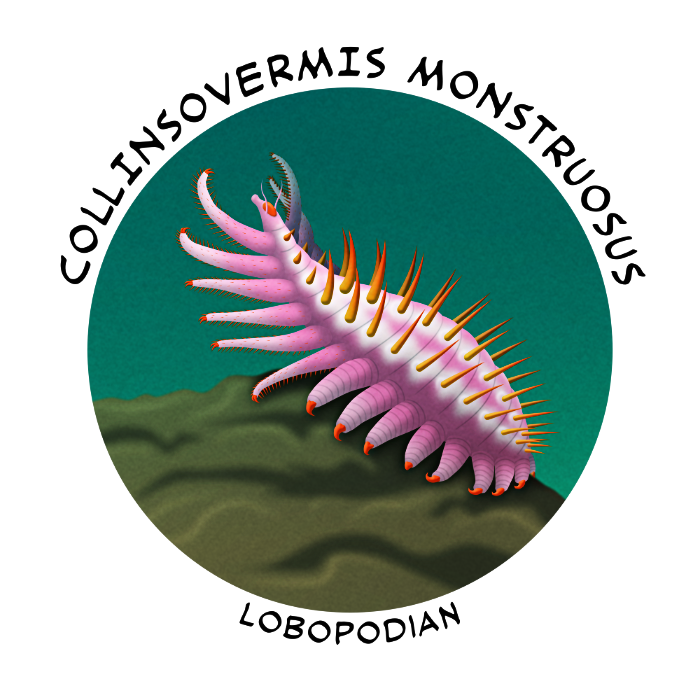Most lobopodians looked fairly similar to each other, many resembling armored velvet worms, but some of these early panarthropods evolved much more diverse body plans and ecologies during the mid-Cambrian.
And compared to most of its slender relatives, Collinsovermis monstruosus was built like a tank. An absolute unit.

Originally discovered in 1983 in the Canadian Burgess Shale deposits (~508 million years ago), for several decades this species was known only by the nickname of “Collins’ monster”, after paleontologist Desmond Collins who published a single image of the fossil in 1986. It was finally formally described and named in 2020, and while our current understanding of lobopodians makes it seem a bit less bizarre than it did in the 80s, it’s still one of the most unique-looking members of the group.
It was part of a lineage of lobopodians known as luolishaniids, which specialized several pairs of their front limbs into feathery appendages used for filter-feeding.
About 3.5cm long (1.5″), its large chunky body had 6 pairs of long spiny feeding appendages and 8 pairs of stout legs, each ending in a single massive hooked claw. Up to three long sharp spines adorned each body segment, and its head sported both a pair of antennae and a shield-like sclerite plate.
It probably used its hooked claws to climb up onto rocks and sponges, gathering plankton and organic particles from higher in the water column with its front limbs – and relying on its extensive spiky armor to deter larger predators while it was feeding in such exposed locations.

Another species called Facivermis yunnanicus was just as weird as the Collins’ monster despite being almost the complete opposite in appearance.
Known from the Chinese Chengjiang fossil deposits (~518 million years ago), it was up to 9cm long (3.5″) with five pairs of feathery front appendages and then… no other limbs at all. Instead it had a very long tubular body covered in tiny spines, and a pear-shaped bulbous rear end ringed with three rows of hooks.
It was discovered in the late 1980s and was originally thought to be a polychaete worm, with later studies eventually reinterpreting it as an unusual early panarthropod. It was suggested to be an ambush predator that anchored its rear end into the seafloor sediment and snatched up prey with its tentacle-like appendages, and was proposed as a transitional link between the limbless scalidophorans and the many-limbed lobopodians.
But then some new specimens described in 2020 revealed something unexpected.
Facivermis actually lived inside tubes buried in the sediment, and rather than being an early transitional form it was really a luolishaniid lobopodian – one that had descended from many-limbed ancestors and had highly specialized its body for an immobile mode of life, similar to modern tubeworms, reducing all of its other limbs to nothing in the process.
It’s now one of the oldest known examples in the fossil record of a secondary loss of limbs.
It would have kept most of its body safely hidden inside its tube, anchored in with its spiny rear end, extending out its head and feathery limbs when it was feeding. Only 2 tubes are known out of 30 specimens, suggesting they were either made of a material that fossilized even more rarely than their occupants’ soft bodies did, or that Facivermis was still somewhat mobile and also spent time outside of its tubes, possibly regularly abandoning them and constructing new ones.
